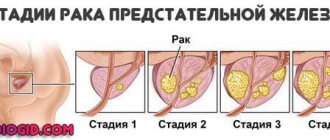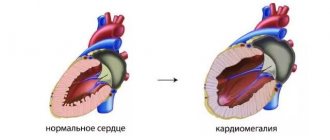ESR or erythrocyte sedimentation rate indicates an imbalance of blood proteins, which can result from cell destruction as a result of many pathological conditions. In case of cancer, a change in ESR is not at all necessary, but in some clinical situations, an acceleration or deceleration of the rate of fall of red blood cells may occur.
- ESR: what is it?
- ESR norm
- ESR indicators in oncology
- Table of ESR indicators for oncology in men and women
- Preparation for analysis
- How to get tested
General information
New methods for diagnosing and determining the causes of diseases appear in modern medicine regularly. However, determining ESR in human blood is still an effective diagnostic method.
It is used for diagnostic purposes in both children and adults. Such a study is prescribed both when a patient who is concerned about a certain disease contacts a doctor, and during preventive examinations. Any doctor can interpret this test. ESR is included in the group of general blood tests (CBC). If this indicator is elevated, you need to determine the cause of this phenomenon.
Important to remember
- Inflammation tests—ESR, CRP, and procalcitonin test—help determine whether there is underlying inflammation in the body
- The most sensitive test of this trio, the procalcitonin test, allows you to distinguish a viral infection from a bacterial one, but does not allow you to find out which bacteria caused the infection. Typically, it is used in a hospital to monitor the condition of critically ill patients.
- Less sensitive tests - ESR and CRP - allow you to understand whether there is inflammation or not. CRP does this more accurately than ESR, but is more expensive, so it is rarely prescribed “just in case.” However, both CRP and ESR are often prescribed to patients who are recovering at home
- There is no point in doing inflammation tests as part of a check-up: in healthy people they will not provide any interesting information. And even if they do, it will be very difficult to figure out the results on your own. It is better to leave the appointment of tests for inflammation to the doctor - he will determine which test is needed, help you understand the results and prescribe competent treatment.
What is ESR in the blood?
Those who are prescribed such a study are interested in why an ESR analysis is performed and what it is. So, the abbreviation ESR is the capital letters of the term “ erythrocyte sedimentation rate ”. Thus, using this test, the erythrocyte in the blood can be accurately determined.
Erythrocytes are, as you know, red blood cells. anticoagulants act on them over a certain period, they settle at the bottom of the capillary or test tube. The time during which a blood sample taken from a patient is divided into upper and lower layers is defined as ESR. It is assessed by the height plasma layer , which was obtained during the research process, in millimeters per 1 hour. The ESR indicator is nonspecific, however, it has high sensitivity.
If the ESR level in the blood is elevated, this may indicate the development of various disorders in the body. So, sometimes this is an indicator of the development of infectious, oncological, rheumatological and other pathologies even before the manifestation of obvious symptoms of diseases. Accordingly, if the ESR level is normal, the doctor, if necessary, prescribes other tests.
The ESR norm for women is 3 to 15 mm/h. But you need to take into account that this indicator also depends on age - normally it can be different for women under 30 and after 30 years. If necessary, the norm of red blood cells in the blood of women is also determined. In pregnant women, ESR increases starting from the fourth month. It should be taken into account that the ESR rate in pregnant women may vary depending on the period of gestation.
The norm for ESR in men is from 2 to 10 mm/h. A general blood test also determines red blood cells in the blood of men.
The normal ESR level in the blood of children depends on the age of the patient.
This value in the diagnostic process is important for:
- differentiation of diagnosis ( appendicitis and ectopic pregnancy , angina pectoris and myocardial infarction , rheumatoid arthritis and osteoarthritis , etc.);
- determining the body's response during the treatment of patients with tuberculosis , lymphogranulomatosis , rheumatoid arthritis , etc.;
- determining a disease that occurs latently (but it should be borne in mind that even normal ESR values do not exclude the development of a disease or neoplasm in the body).
Sometimes this concept is referred to as ROE . ROE in the blood and ESR are identical concepts. Speaking about ROE in the blood, we understand that this is an erythrocyte sedimentation reaction . Once upon a time, this very concept was used in medicine, that is, the norm of ROE in the blood for women, the norm of ROE in the blood of children, etc. were determined. Currently, this concept is considered outdated, but any doctor understands what ROE is in a blood test, what ROE is in oncology, etc.
How to get tested
You need to take the test calmly, it’s too late to get nervous - everything has already happened in the body and all that’s left is to get the information. It would be more correct to pose the question differently: where to take it. It is advisable for an oncology patient to undergo tests in a specialized institution, where not only analysis on the machine is available, but also monitoring of the results obtained “in manual mode”. With specific treatment, especially after the use of medications, the conventional boundary of normality of indicators may temporarily shift. Often, haste in interpreting the result results in excessive examination and unnecessary treatment.
If you want an optimal and unconditionally professional approach, accuracy and objectivity, come for a consultation at our clinic.
Book a consultation 24 hours a day
+7+7+78
Bibliography
- Lugovskaya S.A., Morozova V.T., Pochtar M.E., Dolgov V.V. /Laboratory hematology// M.: Publishing house. Unimed-press; 2002.
- Pervushin Yu.V., Lugovskaya S.A., Marchenko L.A., Kovalevich N.I. / Hematological studies in clinical laboratory diagnostics//Stavropol; 2006
- Nazarenko G.I., Kishkun A.A. / Clinical assessment of laboratory research results // M., 2000.
- Oganesyan A.A., Garbatsevich M.S., Kostyukovich D.I. and others /ESR: old test, new opportunities // Lab. diagnostics. Eastern Europe; 2012; No. 4.
- Chizhevsky A. L. /Biophysical mechanisms of erythrocyte sedimentation reaction// Novosibirsk: Science, 1986.
Diseases in which there is an increased ESR in the blood
If a patient has an elevated ESR in the blood, what this means is determined by the doctor during the diagnostic process. After all, this indicator is very important for diagnosis if the development of a certain disease is suspected. In the diagnostic process, a qualified doctor takes into account not only the fact that the patient has an increased value, but also determines what the presence of other symptoms indicates. But still this indicator is very important in many cases.
ESR: increased in diseases
An increased ESR in the blood of a child and an adult is observed if a bacterial infection - during the acute phase of a bacterial infection.
In this case, it does not matter where exactly the infections are localized: the picture of the peripheral blood will still reflect the inflammatory reaction.
viral infectious diseases occur . What specifically causes this indicator to increase is determined by the doctor during a comprehensive examination.
Thus, we are talking about the development of a certain pathological process if the ESR is higher than normal. What this means depends on the value of the indicator. Very high values – more than 100 mm/h – occur with the development of infectious diseases:
- for sinusitis , bronchitis , pneumonia , ARVI , colds , tuberculosis , influenza , etc.;
- for cystitis , pyelonephritis and other urinary tract infections ;
- for fungal infections , viral hepatitis ;
- in oncology (high rates can be observed for a long time).
During the development of an infectious disease, this value does not increase quickly; an increase is observed after 1-2 days. If the patient has recovered, the ESR will be slightly elevated for several more weeks or months. The reasons for a high ESR with normal leukocytes may indicate that the person has recently suffered a viral disease: that is, the leukocyte count has already returned to normal, but the red cell sedimentation rate has not yet.
The reasons for increased ESR in the blood in women may be associated with pregnancy, therefore, in the diagnostic process, the doctor must take into account these reasons for the increase in ESR in the blood in women.
An increase in ESR is a typical symptom in the following diseases:
- diseases of the biliary tract and liver;
- inflammatory diseases of a purulent and septic nature ( reactive arthritis , etc.);
- blood diseases ( sickle anemia , hemoglobinopathies , anisocytosis );
- ailments in which tissue destruction and necrosis ( stroke , heart attack , tuberculosis , malignant neoplasms);
- pathologies of the endocrine glands and metabolic disorders ( obesity , diabetes , cystic fibrosis , etc.);
- malignant degeneration of the bone marrow, in which red blood cells enter the blood that are not ready to perform direct functions ( myeloma , leukemia , lymphoma );
- autoimmune diseases ( scleroderma , lupus erythematosus , rheumatism , etc.);
- acute conditions in which the blood becomes more viscous ( diarrhea , bleeding , vomiting , postoperative conditions , etc.).
Diagnostics
Any, even asymptomatic, increase in ESR requires contacting a doctor to find out the cause. The doctor asks the patient in detail whether there was an increase in body temperature, whether the patient experienced pain in the joints, muscles, fatigue, etc. This can help in the diagnostic search. An additional examination is prescribed, depending on what nosology is suspected:
- Blood tests
. The concentration of hemoglobin and blood cells (erythrocytes, platelets, leukocytes) is measured. Very often an increase in the level of fibrinogen and C-reactive protein is detected. The blood is checked for the presence of autoaggressive antibodies (aCCP, antineutrophil cytoplasmic antibodies, antibodies to double-stranded DNA). In severe bacterial infections, high levels of presepsin and procalcitonin are observed in the blood. - Identification of the infectious agent
. Antibodies to antigens of viruses, bacteria, parasites are determined using ELISA methods and serological tests. PCR detects DNA and RNA of microorganisms. Microscopy, bacteriological culture of urine, sputum, and blood are performed. A stool test is performed for worm eggs. - Radiography
. With tuberculosis, an X-ray of the lungs shows an increase in mediastinal lymph nodes and infiltration in the upper lobes of the lungs. In paraproteinemic hemoblastoses, x-rays of the bones reveal numerous foci of bone tissue destruction. Multiple myeloma is characterized by a “puncture sign” on a skull x-ray. - Ultrasound
. An ultrasound scan of the abdominal cavity reveals thickening of the walls of the gallbladder in cholecystitis, enlargement and diffuse changes in the pancreatic parenchyma in pancreatitis, and enlargement of the liver and spleen in hemoblastosis. - Angiography.
In case of infarctions of various organs caused by thrombosis, radiography or computed tomography with contrast reveals a filling defect at the site of vessel occlusion. With systemic vasculitis (Horton's, Takayasu's arteritis), areas of vascular stenosis are visible. - Histological studies
. If the cause of increased ESR is oncological pathology, a biopsy is necessarily performed. A common symptom is the detection of a large number of atypical cells. In patients with malignant blood diseases, a predominance of blast cells is noted in the bone marrow aspirate, and atypical lymphoid proliferation is noted in the lymph node biopsy.
Normal and pathological ESR values
In medicine, the physiological limits of this indicator are determined, which are the norm for certain groups of people. Normal and maximum values are shown in the table:
| In children (value depends on the age of the child) | Among women | In men |
|
|
|
ESR during pregnancy
If this value is increased during pregnancy , this is considered a normal condition. The normal ESR rate during pregnancy is up to 45 mm/h. With such values, the expectant mother does not need to be further examined and the development of pathology is not suspected.
Reasons for the growth of the indicator
An increased erythrocyte sedimentation rate is the result of infections, excessive immune activity, necrosis, cancer, and hormonal imbalances.
If we talk about factors increasing the level, they can be like this:
- Diabetes. A chronic disease in which insulin production decreases or tissues become insufficiently sensitive to it. The result is surges in blood sugar, vascular disorders, tissue ischemia, gangrene, blindness. Lots of complications. Even fatal. Urgent help from an endocrinologist is needed.
- Excessive production of thyroid hormones. T3 and T4. The condition is called hyperthyroidism. Accompanied by a lot of discomfort: headaches, weakness, weight loss, fever, instability of blood pressure.
The body literally destroys itself, burning all reserves at an accelerated pace. Treatment with iodine preparations is necessary to reduce the activity of the organ.
- Infections. Any origin. Whether bacterial, viral or fungal processes, ESR is always higher than normal. Treatment is carried out by therapists, ENT doctors and others according to their profile. Drugs are prescribed to kill pathogens.
- Autoimmune disorders. Inflammatory conditions that are provoked by one’s own defenses. Objectively, there are no reasons for a violation. The body, roughly speaking, comes up with them itself.
The provocateur can be anything: an allergen, a previous infection. The body is in a state of over-alert and responds to a harmless trigger. Treatment is provided by rheumatologists and immunologists.
- Parasitic infestations. Worms. Not necessarily in the intestines. There are many varieties of uninvited guests: some affect the liver, others are localized in almost any system where they enter through the bloodstream. Treatment is urgent because the condition is serious.
- Tissue necrosis. Dieback. For example, against the background of gangrene or heart attack, stroke. Cell breakdown products must be disposed of. Therefore, leukocyte counts and ESR levels increase as a temporary phenomenon.
- Allergic reactions, which have already been mentioned.
- Cancer processes. Especially at advanced stages, when active decay of cells of altered structure begins. They poison the body because they turn into poisons. Requires disposal. The scavengers are white blood cells. ESR increases gradually, but almost never decreases. The root cause needs to be treated.
- Kidney diseases. From inflammatory phenomena to nephropathy, organic disorders. Doesn't really matter. Treatment of the underlying pathological process is carried out. Urologists and nephrologists are involved in solving this problem.
- Malignant bone marrow disorders. When too many formed elements are produced.
Accelerated ESR syndrome is most often caused by infectious inflammation, allergic reactions and autoimmune processes.
At the same time, the degree of increase can be used to judge the complexity of the pathology. For example, growth up to 100 mm per hour and higher is typical for severe disorders: tuberculosis, hepatitis, bladder damage, influenza, pneumonia, cancer. That is, acute phenomena.
Methods used to test ESR blood
Before deciphering what ESR means in a blood test, the doctor uses a certain method to determine this indicator. It should be noted that the results of different methods differ and are not comparable.
Before performing an ESR blood test, it must be taken into account that the obtained value depends on several factors. The general analysis must be carried out by a specialist - a laboratory employee, and only high-quality reagents are used. The analysis in children, women and men is carried out provided that the patient has not eaten food for at least 4 hours before the procedure.
What does the ESR value show in the analysis? First of all, the presence and intensity of inflammation in the body. Therefore, if there are abnormalities, patients are often prescribed a biochemical analysis. Indeed, for high-quality diagnostics it is often necessary to find out in what quantity a certain protein is present in the body.
ESR according to Westergren: what is it?
The described method for determining ESR - the Westergren method - currently meets the requirements of the International Committee for Standardization of Blood Studies. This technique is widely used in modern diagnostics. For such an analysis, venous blood is needed, which is mixed with sodium citrate . To measure ESR, the distance of the stand is measured, the measurement is taken from the upper limit of the plasma to the upper limit of the red blood cells that have settled. The measurement is carried out 1 hour after the components have been mixed.
It should be noted that if Westergren's ESR is elevated, this means that this result is more indicative for diagnosis, especially if the reaction is accelerated.
ESR according to Wintrob
The essence of the Wintrobe method is the study of undiluted blood that was mixed with an anticoagulant. The desired indicator can be interpreted using the scale of the tube in which the blood is located. However, this method has a significant drawback: if the reading is above 60 mm/h, the results may be unreliable due to the fact that the tube is clogged with settled red blood cells.
ESR according to Panchenkov
This method involves the study of capillary blood, which is diluted with sodium citrate - 4:1. Next, the blood is placed in a special capillary with 100 divisions for 1 hour. It should be noted that when using the Westergren and Panchenkov methods, the same results are obtained, but if the speed is increased, then the Westergren method shows higher values. Comparison of indicators is in the table below.
| According to Panchenkov (mm/h) | Westergren (mm/h) |
| 15 | 14 |
| 16 | 15 |
| 20 | 18 |
| 22 | 20 |
| 30 | 26 |
| 36 | 30 |
| 40 | 33 |
| 49 | 40 |
Currently, special automatic counters are also actively used to determine this indicator. To do this, the laboratory assistant no longer needs to dilute the blood manually and track the numbers.
Development plan
- Support for multimedia content (illustrations, videos)
- Support for third party ad networks via ADFOX
- Support for third-party analytics counters (Google Analytics, Mail.Ru, Rambler Top 100, Mediascope)
- Speed up loading Turbo pages by 4 times
- Tables, lists, quotes
- Image and photo galleries
- Displaying comments
- Embed codes for content from YouTube, Vimeo, Instagram, Twitter
- “Endless” feed (block “You may be interested in”)
- Site navigation
- Share button
- Additional advertising spaces
- Advanced analytics capabilities
- Ad rendering speed
- API for publishing content
- Call button, chats and feedback forms
- Support for content embed codes from VKontakte and Odnoklassniki
- Design customization in CSS
- Supports GIF animation and video players
- Editor for debugging Turbo pages
- Rating block
- Media content gallery with slider
- Quickly view a larger image by clicking
- Content block and anchor links
- Sidebar – new menu block
- Additional design types for the “You may be interested in” block
- Support for embedded content from Yandex.Maps and Yandex.Music
- Search form - on your website or with sending a request to search engines
- Impressions of new pages in Turbo format when following links from Turbo pages
- Product cards for online stores
- More statistics in Metrica and the ability to use goals
- Video in Turbo
- New page types
- Poll block
- Advertising optimization - new formats
- The ability to place a product on Turbo pages in one click so that the user does not leave the accelerated version of the store
- Custom blocks
- Authorization
- Possibility to leave a comment
- Advanced features of Metrica
- Feedback from webmasters
Expanded appearance customization options
We have started testing the display of elements created by site owners.
For example, Turbo pages can have complex interactive components using JavaScript, such as diagrams of the placement of chess pieces or players on the field. But there should be more tools that allow you to flexibly customize Turbo pages - and we, of course, will continue to add them. Please tell us what kind of customization is required for the Turbo pages of your website - leave your contacts in this form, and a specialist from the development team will contact you to clarify the details.New opportunities for online stores
Online payment and shopping cart will appear in the e-commerce arsenal. Moreover, in the Turbo version of the store you will be able to make purchases directly from the list of products, and after going to the cart, select delivery options. We will add the ability to pre-fill fields (for example, name or contacts) to the order form - if the site visitor is authorized in his Yandex account. It will become more convenient and easier for users to interact with the Turbo version of the store - there will be fewer failures and more conversions.
Advanced analytics in Yandex.Metrica
The Metrics Webvisor tool will help you analyze in detail the behavior of visitors to Turbo pages.
It records the actions of visitors on the site and shows them in video format - this way you can identify problems in navigation, logic and usability, and as a result, increase site conversion. Metrica will also feature new reports to analyze the effectiveness of the Turbo version of online stores.New blocks and widgets on Turbo pages
By the end of the year, Turbo pages will have:
a multi-level menu,- customizable dynamic forms,
- Apester platform embeds for surveys and quizzes,
- cards for grouping content on a page,
- possibility of fixing the site header,
- Scrolling support when viewing an image gallery,
- “Expand” button to view articles on the desktop,
- “breadcrumbs” to facilitate navigation on the site,
- opportunity to comment on articles.
And new widgets - including Market and Zen widgets
- will increase traffic and expand the site’s audience.
New advertising formats and optimization opportunities
- will appear with a parallax effect
, which will be placed under the site content. The content of such an ad unit appears from underneath the content as the user scrolls the page. The advertisement begins to appear smoothly from the bottom of the banner, and when scrolling, it gradually opens, after which it is just as smoothly and neatly hidden under the content.
Fixed horizontal sticky blocks.
for Turbo pages. This is a new tool for A/B testing of advertising designs with automatic selection of the most profitable option for each site visitor, which is currently undergoing closed beta testing. It will allow you to choose the optimal design of contextual advertising for a specific site.
on Turbo pages, we optimize advertising placements and other parameters so that auto placement brings you more income.
ESR in the blood: what do certain values mean?
As mentioned above, normal ESR values for a healthy man are considered to be 1, 2, 3, 4, 5, 6, 7, 8, 9, 10 mm per hour; for women, the normal value is from 2 to 15 mm/hour. Therefore, for women, a value of 12, 13, 14, 15 is considered normal. However, indicators for women in adulthood can normally be 16, 17, 18, 19, 20.
If the value exceeds the norm by several units, then the blood condition can be considered relatively normal. That is, an indicator of 21, 22 in a woman can be considered acceptable, as well as values of 23, 24 mm/h. When a woman is pregnant, this meaning is even greater. Therefore, expectant mothers have no reason to believe that a reading of 25 means something unpleasant. During pregnancy, the analysis may show 28, 29. ESR 30, 31, 32, 33, 34, 35, 36, 38 is also not evidence of the development of pathological processes in pregnant women.
This indicator increases with age. Therefore, if an ESR value of 40 is noted in elderly patients, the doctor determines what disease this is a symptom of and what it means by the accompanying signs. Normal values for older people are 43, 50, 52, 55 mm/h, etc. However, for young people, values of 40-60 mm/h are possibly evidence of serious disorders. Therefore, after receiving the analysis data, it is necessary to consult in detail about why the ESR is 60, what it could be, and undergo further research.
Low value
As a rule, the reasons for a low value of this indicator are associated with exhaustion of the body, weight loss, taking corticosteroids, hyperhydration, and muscle atrophy. Sometimes ESR is lowered in diseases of the heart and blood vessels.
What does erythrocyte sedimentation rate show?
Based on diagnostic results and a general blood test, the following disorders can be identified:
- Any infections. From colds, ARVI to sexually transmitted diseases and others.
- Autoimmune disorders. Inflammatory conditions associated with changes in the activity of protective forces.
- Cancer, oncological processes.
- Disorders of the endocrine system. Quite rare, but a possible cause of change.
Be that as it may, ESR is a nonspecific indicator. Therefore, it is impossible to provide accurate information and make a diagnosis only in this way. Additional measures are required.
What affects the ESR indicator?
In both women and men, the level of ESR is influenced by a number of different factors, both physiological and pathological. The key factors that most influence this analysis are identified:
- When determined by different methods - according to Westergren et al. - the norm of ESR in the blood of women is higher than that of men. So, an ESR of 25 in a woman may be normal. This is due to the physiological characteristics of blood in women.
- What is the normal ESR level in a woman’s blood depends on whether she is pregnant. For expectant mothers, the norm is from 20 to 45 mm/h.
- A higher ESR is observed in women who take contraceptives . Under this condition, a woman may have a normal ESR of 30. What this means, whether there is a pathology, or whether we are talking about a normal physiological indicator, must be determined by the doctor.
- In the morning, the rate at which red cells settle is higher than in the afternoon and evening, and differences in age do not matter here.
- Signs of accelerated sedimentation are observed when exposed to acute phase proteins.
- If inflammation and an infectious process develops, the values change a day later. how leukocytosis and hyperthermia . That is, on the first day of the disease the indicator can be 10, 14, 15 mm/h, and a day later it can increase to 17, 18, 20, 27, etc.
- ESR is elevated if there is a chronic source of inflammation in the body.
- A reduced value is observed with increased blood viscosity .
- A decrease in sedimentation rate occurs under the influence of anisocytes and spherocytes; the rate becomes greater under the influence of macrocytes.
Additional examinations if the ESR deviates from the norm
Supporting activities include the following methods:
- Oral interview with a person. It is necessary to identify complaints and symptoms of the alleged pathological process.
- Anamnesis collection. To determine the characteristic origin of the disorder. The issue is resolved quickly, right in the doctor’s office. But the results allow us to develop a further diagnostic strategy.
- Biochemistry of venous blood. To find specific markers of autoimmune inflammation, as well as other indicators like bilirubin.
- Ultrasound of the digestive tract. To detect possible gastrointestinal pathologies.
- Serological tests, PCR, ELISA. Within the framework of these methods, infectious processes are studied.
- Chest X-ray.
- Blood test for thyroid hormones, specific sex substances (estrogens).
Usually this is enough.
Elevated ESR in children
When the ESR norm in children is exceeded, most likely an infectious inflammatory process develops in the body. But it should be taken into account, when determining ESR according to Panchenkov, that other indicators of the CBC ( hemoglobin , etc.) are also increased (or changed) in children. Also, in children with infectious diseases, their general condition worsens significantly. In case of infectious diseases, the ESR is high in the child already on the second or third day. The indicator can be 15, 25, 30 mm/h.
If red blood cells are elevated in a child’s blood, the reasons for this condition may be the following:
- metabolic disorders ( diabetes , hypothyroidism , hyperthyroidism );
- systemic or autoimmune diseases ( bronchial asthma , rheumatoid arthritis , lupus );
- blood diseases , hemoblastosis , anemia ;
- diseases in which tissue decay occurs ( tuberculosis , myocardial infarction , cancer ).
It is necessary to take into account: if even after recovery the erythrocyte sedimentation rate is increased, this means that the process is proceeding normally. It’s just that normalization is slow, but after about one month after the disease, normal levels should be restored. But if there are doubts about recovery, then you need to do a re-examination.
Parents must understand that if a child’s red blood cells are higher than normal, this means that a pathological process is taking place in the body.
But sometimes, if a baby’s red blood cells are slightly elevated, this means that some relatively “harmless” factors are influencing:
- in infants, a slight increase in ESR may be associated with a violation of the mother's diet during natural feeding ;
- period of teething;
- after taking medications ( Paracetamol );
- with a lack of vitamins ;
- with helminthiasis .
Thus, if red blood cells are elevated in the blood, this means that the child is developing a certain disease. There are also statistics on the frequency of increase in this value in various diseases:
- in 40% of cases, a high value indicates infectious diseases ( respiratory tract diseases , tuberculosis , urinary tract diseases , viral hepatitis , fungal diseases );
- in 23% - oncological processes of various organs;
- in 17% - rheumatism , systemic lupus ;
- in 8% - cholelithiasis , inflammation of the gastrointestinal tract , pelvic organs , anemia, ENT diseases , injuries , diabetes , pregnancy ;
- 3% — kidney disease.
Correction
Conservative therapy
A transient increase in ESR after exercise, food intake or medications does not require correction. Elderly people with high ESR without other clinical and laboratory signs of any pathology also do not need any intervention. To normalize the pathological increase in ESR, it is necessary to treat the nosology that caused its development.
- Fighting infection
. For bacterial infections, antibiotics are prescribed according to sensitivity. If the patient's condition is serious and requires immediate treatment, broad-spectrum antibiotics (penicillins, cephalosporins, fluoroquinolones) are used. For influenza, oseltamivir is used; for other acute viral infections, symptomatic therapy is used. For the treatment of chronic viral hepatitis, combinations of peligated interferon with ribavirin and entecavir are effective. - Anti-inflammatory therapy
. For diseases accompanied by immune inflammation, anti-inflammatory drugs are needed - glucocorticoids (prednisolone), cytostatics (azathioprine, methotrexate), 5-aminosalicylic acid derivatives (sulfasalazine). If they are ineffective, tumor necrosis factor inhibitors - monoclonal antibodies (infliximab) are used. - Blood thinning
. If the cause of the heart attack is thrombosis or embolism, antiplatelet agents (clopidogrel, acetylsalicylic acid) and anticoagulants (heparin, warfarin, dabigatran) are prescribed. Thrombolytics (streptokinase) are used to dissolve a blood clot. - Chemotherapy.
Antitumor drugs (alkylating agents, antimetabolites) are used to treat cancer. Malignant blood diseases require a combination of several chemotherapy drugs.
Surgery
In case of acute abdominal pathology (cholecystitis, pancreatitis), it is necessary to perform a surgical (sometimes emergency) operation - pancreatic resection, laparoscopic cholecystectomy. Endovascular thrombectomy is performed to remove the thrombus. In case of myocardial infarction, percutaneous coronary intervention (stent placement) is performed. Unsuccessful conservative therapy for oncohematological diseases is considered an indication for bone marrow transplantation.
When can increasing ESR be considered safe?
As you know, an increase in red blood cells in the blood, as a rule, indicates that a certain inflammatory reaction is developing in the body. But sometimes the reasons for the increase in red blood cells in the blood of women and men are not so categorical.
We are talking, first of all, about allergies , when analysis in men and women helps to judge whether anti-allergy treatment is being carried out correctly (fluctuations in the initially elevated ESR should be taken into account). That is, if the clinical effect of the drug occurs, then gradually the normal ESR level in the blood of men, as well as in women, will be restored.
A hearty breakfast before the test can also increase this indicator; a strict diet and fasting can also change it.
ROE can change during menstruation, during pregnancy and after the birth of a child.
Proper preparation for the test
As for specific recommendations:
- Biomaterial is given on an empty stomach. It's best in the morning, while your metabolism is still slow. That is, approximately until 9-10.00 local time. Taking into account your own biorhythms.
- You should also not overeat in the evening. This will lead to distortion of the survey results.
- In a few days you need to give up oral contraceptives and vitamin preparations. This is the only exception when preparation begins earlier.
- You need to tell your doctor about your cycle or early pregnancy. When the situation is not yet clear.
- It is important to stick to your diet. Don't overeat, as said, but don't starve either. Otherwise, the results will again be false.
In general, the analysis is not particularly difficult. Minimal and very simple preparation on the eve of the diagnostic event is sufficient.
Otherwise, you will have to donate blood again. Or the doctor will inadvertently prescribe completely useless and even harmful treatment.
False-positive ESR tests
In medicine there is also the concept of a false positive analysis. An analysis of ESR is considered such if there are factors on which this value depends:
- anemia (no morphological changes in red blood cells occur);
- increase in the concentration of plasma proteins , with the exception of fibrinogen ;
- hypercholesterolemia;
- renal failure;
- obesity ;
- pregnancy;
- old age of a person;
- administration of dextran ;
- a technically incorrect study;
- taking vitamin A ;
- recent vaccination against hepatitis B.
What to do if the reasons for the increase are not determined?
If the analysis is normal, but the causes of the increased erythrocyte sedimentation rate cannot be determined, it is important to conduct a detailed diagnosis. It is necessary to exclude oncological diseases , so lymphocytes , GRA, and the norm of leukocytes in women and men are determined. During the analysis process, other indicators are also taken into account - whether the average volume of erythrocytes is increased (what this means - the doctor will explain) or whether the average volume of erythrocytes is decreased (what this means is also determined by the specialist). Urine tests and many other studies are also carried out.
But there are cases when high ESR levels are a feature of the body, and they cannot be reduced. In this case, experts advise regular medical examinations, and if a certain symptom or syndrome appears, consult a doctor.
When is a test ordered?
The study is applied to a wide group of clinical cases. This is the basis of diagnosis, although not the key technique.
Specific indications include:
- Increased body temperature. Most likely, the reason is precisely the inflammatory process. Autoimmune or infectious origin. Which one exactly needs to be looked at separately. A general blood test will not get rid of it.
- Symptoms of intoxication. Headaches, severe weakness, drowsiness, feeling of exhaustion. This also includes nausea, vomiting, episodes of body weakness, and constant fatigue.
Everything that indirectly indicates infection, poisoning of the body with waste products of bacteria, decay of one’s own cells that die as a result of the influence of a foreign structure. Analysis will shed light on the situation.
- Focal infectious disorders and suspicions of such. Absolutely any character. For example, damage to the throat, oropharynx, lungs, respiratory tract, genitals, and excretory system. There are hundreds of options. Potentially any localization.
The goal is simply to confirm the increase in ESR levels. This is a sufficient basis for further diagnosis and in-depth research.
- Clear signs of autoimmune disorders. For example, inflammation of the joints, changes in skin tone and temperature in local areas, and so on. Everything that indicates a pathological process.
- Preparing for surgery. To exclude inflammation before radical treatment. Since any deviations of this kind are a contraindication for correction. We'll have to wait until the situation normalizes. Only then can intervention be carried out.
- Time after surgical treatment. As part of the assessment of the period after surgery. Blood is taken first every 3-5 hours, then less and less often. This is important, in patients with a weakened immune system, or if a medical error was made, acute inflammation may develop, including sepsis. This is a possible complication of the pathological condition.
- Suspicions of cancer. Cancer also leads to an increase in ESR, even at the earliest stages. The absence of symptoms and a clear abnormality in laboratory results, such a discrepancy should give rise to concern.
Suspicions can be confirmed or refuted only through MRI and histological techniques. Depends on the location and specific type of tumor.
Attention:
Benign neoplasias do not produce inflammatory processes; they cannot be detected that way.
- Pain of unknown origin. Any localization.
- Scheduled examination. A complete blood test with erythrocyte sedimentation rate is an effective way to check your health. Conducted every six months. Maybe a little less.
- Evaluation of the effectiveness of therapy. Dynamics of the main pathological process.
Here are the main points. In fact, a general blood test (which includes the CBC) is used in all cases without exception, as an attempt to establish a vector for further diagnosis.
ESR (ROE) is a universal indicator that indicates in favor of inflammatory-infectious, autoimmune and even cancer processes.
This analysis alone, of course, is not enough to give an accurate answer to what’s what. Advanced diagnostics required. The methods are selected by the attending physician, based on complaints, anamnesis and laboratory findings.
How to reduce ESR in the blood?
The doctor will tell you in detail about ways to reduce this indicator with the help of medications after the study. He will prescribe a treatment regimen once the diagnosis has been made. It is strictly not recommended to take medications on your own. You can try to reduce it with folk remedies, which are mainly aimed at restoring normal function of the immune system , as well as cleansing the blood. Effective folk remedies can be considered herbal decoctions, teas with raspberries and lemon, beet juice, etc. How many times a day to take these remedies, how much you need to drink, you should find out from a specialist.
Prevention
To prevent deviation of a nonspecific indicator means to prevent the development of the disease. To do this you will need:
- lead a healthy lifestyle;
- eat properly and nutritiously;
- devote time to sports;
- strengthen the immune system;
- regularly take vitamins (preventive courses of multivitamin preparations);
- undergo annual preventive examinations;
- promptly sanitize foci of chronic infection;
- promptly and completely treat all emerging diseases.











